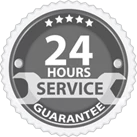Marine Fuel Water Separator
Marine fuel water separators, or marine oil water separators are used to separate oil from oily wastewater (such as bilge water) before sewage is discharged into the environment. The wastewater discharges must comply with MARPOL 73/78 regulations.
Type-approved 15ppm bilge water separator and 15ppm bilge water alarm device, as well as automatic shut-off device.
Marine bilge oil sewage separation unit capacity. Tonnage size usually determines how much bilge water is produced. A bilge water separator’s rated treatment capacity should be greater than the amount of bilge water it produces, with a 10% allowance in general. Furthermore, the oil content of the treated discharged water must meet the discharge standard.
According to the 1973 International Convention for the Prevention of Pollution from Ships and the 1978 International Maritime Agreement, water discharged from ship’s sewage separation device within 12 nautical miles of land shall not contain more than 15mg/L of oil.
Types of Oily Water Separator
Marine oil-water separators are available in ten models and specifications. YWC-0.25(z) boat fuel water separators can be configured for ships under 1,000 tons, and YWC-5 marine diesel water separators can be configured for ships over 300,000 tons. All oil-water separators on large ships must pass the type approval test of the classification society. Among the models of oil-water separators are:
YWC-0.25(z), YWC-0. 5(z), YWC-0. 5, YWC-1.0, YWC-1.5, YWC-2.0, YWC-2.5, YWC-3, YWC-4, YWC-5
The oil-water device is not only suitable for the treatment of marine bilge oily sewage, but also for the treatment of oily sewage of industrial and mining enterprises, and its discharge standards are in full compliance with the relevant requirements of the environmental protection department.
Marine Fuel Water Separator Installation
1. Install the base
All parts of the device are uniformly mounted on a welded channel steel “device base.”. In the engine room of the ship, a “ship base” of the same dimensions as the base of this device is to be designed. An integral part of the hull structure is the “ship base”. The “ship base” must be bolted to the “installation base” and GB/T853 square diagonal gaskets should be used.
This figure shows the dimensions of the installation base and the arrangement of the bolts.
2. Pipe connections
The bilge oil sewage inlet, discharge liquid outlet, clean water inlet (not greater than 0.3mpa), and three-stage ultrafiltration concentrate back to the bilge water are all DN20, and the oil outlet DN20. Oil discharge valves and sea water filters are packaged separately and connected by the shipyard. Refer to figure 3 for an outline and external interface.
3. Electrical connection
Power supply AC380V, 3 Φ, 50Hz into the electrical control box; Lead bilge level probe to the engine-room bilge catchment well. Please refer to 322DF-3-00YL, level relay for detecting bilge level JYB3 external contact point #5, #6 or #7 is pre-shorted out of the factory. In order to connect JYB3, the short-copper wire should be removed.
Fuel Water Separator Maintenance
1. Recoil with water when cleaning the inclined plate separator in the first level separator. “Transfer switch” Q3 on the electrical control box switches to “manual” recoil, and the oil discharge valve on the sewage tank on the ship is closed, and the recoil backflow valve is opened, so that water enters the bottom from VS2, is discharged from the top VS1, and the water flows back to the bilge. Open the bottom sludge valve to remove the garbage from the bottom of the separator. It should be done every six months with 15 minutes of recoil for each cycle, depending on the level of pollution.
2. The secondary filter element changes, on the first and second class pressure gauge as you can see, if the differential pressure between import and export from the secondary filter is greater than 10 m – H2O (100 kpa), jams, you should stop, drain the liquid out of the secondary filter, open the cover, clean the clogging and replace the same specifications of the filter, and then close the lid, on average every year change again.
Water Separator for Boat Advantage
- Marine oily water separator adopts high-efficiency and reliable three-stage high-quality separation system.
- No high-speed moving parts, low maintenance and low cost.
- There are no delicate and expensive membranes.
- Use organic materials.
- Low power consumption.
- No hazardous chemicals, cleaning cycles or backwashing are required.
- Refined with a unique advanced granular media (AGM), it absorbs 60% by weight of petroleum pollutants-increasing the service life of consumables, minimizing costs and maximizing uptime.
- All models approved by classification societies, including BV, ABS, DNV GL (including 5ppm “clean design” symbol), CCS, RMRS, Med and USCG.
- Fully automatic, simple operation, no personnel training required.
- Can provide general contracting or modular form, easy to install.
- Auxiliary equipment and spare parts are available to allow units.

Instant Quote Online
Dear friend, you can submit your pressing need online, our staff will promptly get in touch with you. If you have any questions, consult our customer service through online chat or telephone in a timely fashion. Thank you for your request online.
[86] 0411-8683 8503
available from 00:00 – 23:59
Address :Room A306, Building#12, Qijiang Road, Ganjingzi
Email : sales_58@goseamarine.com


